#Homestead Grays Baseball Cap
Text
The Legendary Homestead Grays
The Legendary Homestead Grays
The Homestead Grays, a pioneering team in the history of American baseball, made significant strides in the sport during a time when racial segregation was a widespread reality. Established in 1912 and lasting until 1950, the Grays represented both a beacon of hope and a testament of resilience in the face of adversity.
The Humble Origins
The Homestead Grays…

View On WordPress
#Homestead Grays#Homestead Grays And Pittsburgh Crawfords#Homestead Grays Baseball Cap#Homestead Grays Best Record#Homestead Grays Cap#Homestead Grays City#Homestead Grays Hall Of Famers#Homestead Grays Josh Gibson#Homestead Grays Owner#Homestead Grays Players#Homestead Grays Record#Homestead Grays Roster#Homestead Grays Stadium#Homestead Grays Team#Homestead Grays Uniforms#Homestead Grays Wiki#The Homestead Grays Hat#The Homestead Grays Players
0 notes
Text
Fic: What Spring Does To The Cherry Trees, Chapter 3
Chapter 1 | Chapter 2 | Chapter 3 | Chapter 4 | Chapter 5 | Chapter 6 | Chapter 7 | Chapter 8 | Chapter 9 | Chapter 10 | Chapter 11 | Chapter 12
Rating: Mature/General (this chapter). The whole is going to be Explicit.
Fandom: Narcos
Relationship: Javier Peña/OFC (Eva)
Additional tags/warnings (whole thing): Slow burn, anxiety, javi trying to adjust, ofc trying to get over trauma (who is she kidding she thrives on it), ex-military, violence and injury, guns, loss of parent, h/c, javi being a lil prick but also soft!.
Summary: Javier Peña has resigned from the DEA and is back at his dad’s ranch in Texas. Life is slow and uneventful, until an unfamiliar face shows up at the local watering hole one night. Eva is retired from the army and lives in her old pickup truck with more than one ghost. She’s looking for ranch work and when her path crosses Javier’s, maybe they can help each other along in their lives?
The sun is rising when Eva comes around the following morning. Her arm is burning with pain and the bandage has bled through, undoubtedly as a result of yesterday’s overstraining. She has a first aid kit in the car and she’s confident that she can change the bandage by herself, although the prospect is not appealing.
The cabin feels a little chilly, but at least it is clean. It was well after midnight when she stumbled into bed, dinner being the only break she allowed herself all night. Feeling rude, she had eaten quickly and retired to the cabin, leaving her hosts on their own. A while later, Javier had shown up at her door, no doubt forced by Chucho. He had given her a hand, although Eva would have preferred it if he hadn’t come around. He had definitely checked out her ass when she was on all fours on the floor, scrubbing it with a stiff-bristled brush. Whenever she had glanced his way, he had pretended to busy himself with the toilet door hinge.
”Help yourself to breakfast tomorrow morning if we’re already out by the time you get up,” he told her before bidding her a good night. Eva didn’t stop until the cabin was squeaky clean. Now, in the light of the morning, she finally sees that her efforts have paid off: the floorboards, albeit worn down by countless heels, are more wooden in color than dirty gray, and there’s a citrus smell in the air. The windows are still dirty, but that doesn’t bother her. They can stay that way for all she cares.
The sting in her arm, paired with her habit of getting up early, make her get out of bed despite feeling the need for more sleep. Her formative years were spent getting up at the crack of ass for the day’s chores, and the military wasn’t exactly a place that fostered people who slept in. Used to working through pain and discomfort, she decides to kick start her day with a run. The sweatpants are in her backpack, she fishes out a t-shirt and finds her running shoes and baseball cap, and gets dressed. Setting the timer on her wrist watch, she starts to run along the dirt road leading away from the homestead. As always when running, her mind goes blank. There is nothing except her shallow breaths drawing air into her lungs, legs working, arms pumping along her sides. The cool air soon feels refreshing against her sweaty skin, and the rising sun warms her up further. After thirty minutes, her watch beeps, signaling her to turn around. Her lungs feel like they’re about to burst, but she doesn’t slow down. She hasn’t gone running in a while and usually avoids using up energy like this when she’s working on ranches. God knows 13 hours in the saddle is more than enough. But knowing herself, Eva is certain to have a lot of pent up energy by lunchtime, so she might as well get some of it out of her system.
Back at the cabin, she goes through a short but intense workout routine, secretly missing the yelling of a drill sergeant towering above her.
”Missy, you’re not here for a stroll in the fuckin’ park or to dance ballet! You’re here because you want me to scream at your sorry ass until you can do twice the fuckin’ situps in half the time as these sorry assholes!”
”Sir, yes, sir!”
”What are you here to do, private?”
”I am here to do twice the fuckin’ situps in half the time as these sorry assholes, sir!”
And she had. Being the only woman in her camp, and one of very few women in basic training around the country, aiming for active duty, she had to work twice as hard as the men. She lost count of how many times she was expected to perform better than the men. She had simply gritted her teeth, made herself go deaf to the insults and harassment, and gotten it done. Never thinking, just doing it. Harder, faster, better. It didn’t matter that she was carrying one hundred pounds on her back, she still ran ahead of the rest, ran until she puked, then ran some more.
She won their respect, eventually. But more importantly: she gained the skills she needed to survive. Even after the army, when there was no one to impress anymore, her survival skills came in handy. She didn’t know how to switch off the conditioned instinct, didn’t know how to make it without it. Work, eat, sleep. Work hard, until her hard muscles protested with fatigue, lift and carry and drag and push and fight…
Wiping the sweat from her forehead, Eva exhales in a low groan on her back on the floor. She’s not as fit as she was in the army, but it’s good enough. The lack of pushups will, however, be noticeable for a while. Inspecting her arm, she grimaces as she sees the bandage is not only soaked through but also dusty. That needs to be dealt with.
Bringing her toiletries and clean clothes, she goes up to the house. The front door is unlocked, as she had expected it to be out here, and Chucho is in the kitchen, listening to the morning news on the radio while making breakfast. They nod to each other in a surprisingly familiar fashion, and Eva disappears into the bathroom. Duct-taping a plastic bag around the bandage to keep the water from the wound before she indulges in a long, hot shower, she finds her right hand between her legs. A little bewildered at her unforeseen desire, she nevertheless brings herself to a quick, quiet, and satisfying orgasm. Appalled, she realizes when she turns the water off that she had been thinking about Javier the entire time: his mouth with that plump lower lip inside the parenthesis of his mustache, his big hands, the stark contrast of his broad shoulders to the narrow hips…
The revelation is so staggering that Eva forgets about her arm and accidentally rubs the towel over the bandage. The pain almost blinds her and she drops the towel.
”Fuck!”
There’s a knock on the door.
”You okay?” Javier’s voice on the other side. Drawing a deep breath in a futile attempt to steady her pain receptors, Eva answers in a short bark.
”Fine.”
”Then hurry up, my bladder’s bursting!”
”Go out back like a normal guy, princess!” she snaps, half amused, half annoyed.
She gets dressed and opens the door. Javier’s standing right outside, leaning towards the wall, wearing a t-shirt and shorts. Averting her eyes, Eva slinks past him. She seeks refuge in the kitchen where Chucho, without a word, serves her café de olla.
”You make café de olla?” Eva asks reverently.
”Not every day, but I figured you’d like it,” is the humble response. Eva is not sure how she should convey the range of emotions she’s experiencing at having the traditional Mexican coffee made in a clay pot with cinnamon, cloves, and star anise. Whenever her father could, whenever he had a stove or a fire, he’d make it. Is this what meals with the Peñas will be like: a neverending throwback to her childhood?
”Gracias.” The simple word is spoken with some weight, and she hopes Chucho picks up on it. If he does, he doesn’t show it, and Eva makes no big song and dance about it. Still unsure how to fit into this dynamic, she prefers to play it safe. With her lifestyle it’s better not to form too close relationships, because sooner or later she’s going to be on the road again, off to the next place, the next job, the next people she’ll never get to know.
Javier enters the kitchen and takes his seat, eyes fixed on Eva, like he wants to make sure she’s not running away. After a moment’s hesitation she meets his stare, and the fucker is grinning. Why does he have to be like this? Eva frowns, raises an eyebrow, gives Javier a hard stare and hopes that he’ll knock it off.
”Good morning.” He’s not even teasing her anymore, straight up provoking her.
”Javier.” Her tone cordial, Eva breaks eye contact and sips a little of the delicious, spiced coffee.
”You’re bleeding.”
Eva looks down at her arm and notices that the red on it has grown. She never had time to change that damn bandage.
”I have to change it.” Eva excuses herself and retreats to the bathroom.
”There’s first aid stuff in the cupboard!” Javier calls after her. Rummaging through said cupboard, Eva starts to feel the full burn of the slash. Her tolerance for pain is considerable and she can power through a lot, but now she’s caught in the middle of it again. Pressing her lips together tightly, she takes a moment to draw a few breaths to steady herself. She finds the bandages, knocking over an old bottle of cologne in the process. The cap falls off and she’s enveloped in an outdated masculine fragrance with pine in it.
”Shit.”
”Are you trying to bring the whole house down?” She jumps when she hears Javier behind her. About to tell him to get out, she’s cut off before she can even begin by him taking the bandages from her.
”Gimme that. You’ll end up strangling yourself with it anyway.”
”You do make me want to give up on life,” Eva bites back. Javier stops, looking at her, mouth slightly ajar, before snorting out a laugh. There’s a quick glint in his eye when he opens the pack of bandages.
”You don’t suffer fools, do you?”
”Not normally, no, but since I got here, I am suffering one.”
”Funny.” He smiles at her, eyes crinkling momentarily, and holds out his hand as if asking her to trust him with her arm. With a reluctant sigh, Eva complies. He unravels the gauze, each lap making Eva feel more exposed than the previous. His slow and tender movements suggests he’s undressing her clothes, not a bloody bandage. She looks down at his large hands and marvels at how tender they are. Those hands have held guns and pulled triggers, yet they are capable of this.
He does, however, not have a rancher’s hands. His calluses are not accumulated over years of hard labor but rather the results of being put to work after years of shuffling papers. Every little scratch will leave a visible scar on the up until now unmarred skin. She spots a small scrape on his right knuckles and finds herself wanting to touch it, just to know what it would feel like against her fingertips.
Javier glances at her and catches her focused stare. The confidence which so far has guided his hands falters for a second.
“What happened there?” she asks, pointing with her free hand at his knuckles. Javier frowns and she can immediately tell he’s uncomfortable about it.
“I don’t remember.” He’s down to the compress now and Eva says no more as she bites her teeth together when he lifts the piece of fabric off her skin and it sticks a little to the stitched wound.
”Sé buena,” he praises her in a low voice. Eva exhales audibly and looks at the neatly stitched-up slit. The edges are blue with bruises and red with dried blood and swelling. With a sense of detachment, she feels that she wouldn’t even have recognized this as a part of her own body had not the pain kept her connected to it. It was the same thing that time she got shot: she couldn’t see it as something that happened to her. But now, maybe, with Javier standing right in front of her, broad-shouldered and strangely safe, holding her arm mindfully…
”Wanna clean it?” Javier interrupts her reverie. She shakes her head.
”Absolutely not. It’s not worth the pain.”
He nods and hands her a clean compress which she places over the cut, grimacing at the sting. She then lets him wrap a new bandage around her forearm. A grunt escapes her when he tightens up the first lap.
”Sorry.” He looks focused on his task, brows knitting together and lips parted, eyes fixed on what he’s doing.
”You’ve done this before,” Eva comments, a little surprised at his competence. He hadn't struck her as the caring type, but it dawns on her now that he handles emergencies with calm and efficiency. When she was cut, he took control of the situation, and the same happened at their encounter with local law enforcement.
”I have,” he replies tersely. It’s clear he doesn’t wish to talk about it, and it’s the first time Eva really appreciates him. There is something genuinely nice about him in this moment when he doesn’t try to hit on her, drops all pretense and just seems to want to help. She feels for him, sees the burdens he’s had to shoulder, so she decides to give him a small break.
”It doesn’t get easier, does it?” she asks quietly. Javier looks up, meeting her gaze. He wets his lips but she can’t get hold of what it means.
”It doesn’t,” he finally agrees. ”But we do what we can, don’t we?”
She nods, then looks down at her arm. The cut is still sending laser beams of pain down to her hand and up to her shoulder, but at least the bandage is clean. Javier releases her arm, letting one hand brush it in a quick caress.
”Thanks,” Eva offers.
”Sure.” The corners of his mouth turn up a little. ”Dad would’ve killed me if I didn’t help you.”
”Wise man.”
”Which one?”
Eva surprises him with an enigmatic smile before she pushes past him and leaves the bathroom. Conflicted, she realizes that during the short time she and Javier stood in the bathroom, her demeanor towards him changed from annoyed to empathetic to flirty. She can’t figure out how to be around him, and that shakes her to the core. She’s never had that problem before.
Returning to the breakfast table, Eva welcomes Chucho’s company. With him in the same room, Javier is easier to handle. They talk about the ranch and the sightseeing tour Chucho’s taking her on after breakfast. They agree on lighter duties, like looking after Chucky, the recuperating horse in the stable.
”That’ll free Johnny up,” Chucho states with satisfaction. ”And you can get to know the horse. You can ride, right?”
”Of course.”
”You can ride him once he’s healed.”
Eva nods before emptying her glass of orange juice. Fully satisfied from a hefty breakfast, she helps clear the table before she and Chucho go out to his Ford pickup. To her dismay, Javier comes along. She had hoped she’d get the rest of the morning free from his stare, but apparently that wasn’t in the stars today. He exhausts her with his presence, its constant demand on her to keep her guard up. Uncertain what it is with Javier that she has to protect herself from, Eva nevertheless can’t shake the feeling that anything can happen if she’s left alone with him for too long – and it won’t necessarily be a good thing. She does her best to avoid looking at him, and thankfully, Chucho’s the one doing most of the talking, while Javier’s in the backseat.
Eva finds out that Big River Ranch has 350 heads of cattle and an additional 200 born this winter, spread out over 600 acres. There’s an additional 50 acres of leased grazing grounds, and fifteen for crops. In addition to the beef cattle, Chucho also keeps a few breeding bulls, and wants to expand his horse trading and breeding.
”What about the crop fields?” Eva asks, always eager to support farming instead of killing animals for meat.
”Fallow this year. I’ve leased them out but they’re unused until next spring.”
”Looks like you’re going to have to make do with the beef cattle,” Javier points out from behind Eva, who purses her lips. How did he know?
”We try to be humane here,” Chucho interjects, glancing at his son in the rear view mirror. ”But I guess that’s not the most important point for you.”
”I try not to judge people for wanting to support themselves,” Eva shrugs. ”I wouldn’t work at a cattle ranch if I couldn’t deal with where those cows are ending up. As long as it’s not on my plate.”
The truth is, of course, not that simple, but Eva is tired of getting into discussions that she can never win. It’s hard being a vegetarian in Grilled Ribs Country and she usually just tries to not make a big deal of it. But Javier is persistent.
”What do you eat when the rest of us have a big steak?” he asks from the backseat.
”Are you honestly asking me what vegetarians eat?” Eva scoffs. ”Vegetarians have been around for a long time. It’s not a big deal, so please stop making it one.”
”I’m just trying to imagine life without meat.” Javier holds his hands up in defense as Eva turns around in her seat.
”You know what? I’m making dinner tomorrow night. I’m going to make a chili that will knock your socks off, and then you can never talk about vegetarianism again, okay?”
”You don’t have to cook for us, Eva,” Chucho tells her, but he’s grinning from ear to ear, clearly amused with her back and forth with Javier.
”I don’t mind. My way of saying thank you.”
”So you can clean and cook,” Javier muses smugly. ”We could use you indoors more than outdoors.”
”Did you really just suggest that I be your maid?” Eva objects in a chilly voice.
”I’m joking!”
”You’re not funny.”
He opens his mouth for another protest when Chucho interjects with a quiet Javi that shuts him up. For the rest of the tour, only Chucho and Eva talk, and the conversation stays within the realm of ranch work.
///
Javier finds the cigarettes in his room, takes the whole pack and goes out on the porch, lighting one before he’s even out of the house, sucking it greedily, cherishing the calming effect of the nicotine.
He quits every morning but usually starts again every afternoon. He thought it would be easy to withstand the seduction of nicotine now that he no longer has to manage the tremendous stress of his former occupation, but it turns out he is just as addicted to it when he’s bored.
Or ashamed, like now. Frustrated. He can’t figure her out. She makes no sense to him with her aura of melancholy and murder. He wants her to lean on him but knows she’ll probably draw a gun and shoot him if he dared to suggest it out loud.
He never had any problems talking to representatives of the fairer sex. They all fall for him easily enough, sometimes he only needs to compliment them on their hair and they’re putty in his hands. Those who are harder to charm fall for his competence. So why not her?
He tries to approach the conundrum logically, treat it as a case that has to be solved. Ticks off the whys, hows, and whats in his mind while smoking the cigarette down to the filter.
He’s on his second cigarette when he sees Eva exit the stable, leading Chucky. They’re followed by Johnny. She lunges the horse, watches it move, and says something to Johnny, who replies in that carefree voice he has. Whatever he says, it makes her laugh.
Javier flicks the butt away and reaches for a third smoke but decides against it on account of the sudden feeling of lightheadedness. He looks around himself on the front porch and spots the wicker chair. Taking a seat, he tries not to stare at Eva and Johnny, whose conversation doesn’t reach all the way up here. Still, his gaze is drawn to them, to her, and he hopes they’re just talking about the damned horse. He drums his fingers on his thighs and tries to tear his gaze from the soldier and the cowboy, who are now standing together by the horse, petting it and talking.
Johnny’s good at what he does, but he’s no Einstein. He knows horses and cows, and that’s about it. What could he possibly have to offer Eva?
The realization comes as a lightning bolt from a clear blue sky: Eva does not need anything from him. She conducts herself with the self esteem of someone who has managed on their own for a long time and there is no reason for Javier to get involved. Any attempts will only result in indignation, and maybe a punch in the face.
But if there’s something Javier is good at, it’s reading people. And there is something about Eva’s closedness that makes his gut feeling claim his attention. When he brought up the lawsuit against her attacker and she vehemently refused to go through with it, he caught a brief glimpse of something else than reluctance to get into a lengthy and most probably fruitless process. She seemed scared. There had been no trace of that when she was attacked, but the idea of facing her attacker in court had seemed daunting.
Javier lights a third cigarette despite knowing better. His eyes track back to the woman on the other side of the yard. The late afternoon light forces him to pick his sunglasses from his chest pocket and put them on.
He can no longer remember a time when he wasn’t laser focused on his job, on what was right in front of him. A clear goal: catching Escobar. Catch the Cali godfathers. The audacity of it. He wonders now how he ever had the balls to do it. Chucho will tell him that he always was like this, he always had to stand up for what was right. But what did that get him? A nicotine addiction worthy of a medal, a stressed-out head that doesn’t know how to switch off, a broken engagement, and the creeping, horrifying awareness of not being enough, never doing enough.
He curses to himself and puts the cigarette out in the ashtray on the small, round wicker table with the glass surface.
The screen door opens and Chucho comes out with two beers. He sits down in the second chair and hands one of the bottles to Javi, who accepts it with a nod. They sit in silence for a while, enjoying the afternoon sun and the light breeze, and Javier meticulously avoids looking in Eva’s direction. Chucho, of course, is ruthless.
“She’s good with the horse.”
“Seems to be.”
“She could maybe teach you a thing or two.”
Javier throws his dad a glance and takes a swig from the bottle. “About horses?”
“About getting back in the saddle.”
“So… horses.”
“You know you can’t force scary objects onto a spooked horse,” Chucho continues as if he hadn’t heard. “Earn its trust, be truthful, retreat when you have to, and have patience.”
Javier can’t help but frown in exasperation. Chucho had been extremely disappointed in his son during the whole Lorraine debacle. Some harsh words had been exchanged about leaving women at the altar versus leaving them to fight terminal illnesses all by themselves. After the break-up with Lorraine, Javier had taken the job in Bogotá and not talked to his father in a year. They had since mended fences regarding both how Chucho handled his wife’s illness and passing, and Javier’s leaving Lorraine at the altar. Still, being reminded of both his and Chucho’s past lapses still makes Javier testy, and he knows that his dad wants to see him settle down. Get a wife, some kids. Take over the family ranch.
“I’m not one for breaking in horses, you know that, pops.”
“I know you’re not.” Chucho shoots him a crooked smile. “But she is.”
Javier lets the comment pass by. He takes another swig of beer and rubs his mustache. Beneath his Ray-bans, his eyes stray to Eva again.
25 notes
·
View notes
Text
Centennial All-Time Negro League Baseball Team

This season was supposedly going to commemorate a great deal of celebration in a new decade of baseball. The impact of the COVID-19 outbreak sabotaged almost all of these celebrations to hold in high regard by all teams in Major League Baseball. From the international series in London and Mexico City hosting baseball games to the inaugural "Field of Dreams" game in Iowa, all of the events were canceled due to a pandemic that almost canceled the baseball season entirely. Baseball could not celebrate events that normally celebrate pinnacle events that are always remembered in baseball history.
Jackie Robinson Day is normally held on April 15th to celebrate when the player made his major league debut. Robinson is the first black player to be celebrated by the MLB for breaking the color barrier in the sport and being an inspiration to all in other American sports. As a result, both leagues retired the number '42' to not be worn by any player, and every player wears this number on Jackie Robinson Day to celebrate the legacy of the famous Brooklyn Dodger. This year, Jackie Robinson Day was moved to August 28th to make sure the league does not forget the impact Robinson had on the sport. The impact of the day is echoing even further with the current events that are happening in the sports world. The recent protests for human and civil rights have impacted the pace of play for athletes everywhere. It is the expectation that the players in the majors will make their voices heard while honoring Jackie Robinson.
Third paragraph

Roy Campanella, Catcher: Josh Gibson was the original choice for this position and setting the bar as one of the best catches in the Negro League. Unfortunately, Gibson would not live to see the day for the color barrier to be broken in the MLB; enter Campenella. As the catcher for the Brooklyn Dodgers from 1948 to 1957, Campenella busted out on the scene as one of the best catchers that transitioned from the Negro League to the MLB. Campenlla followed Jackie Robinson to the Dodgers a season after, becoming the second black player on the organization. The pair would go on and become World Series champions together on the 1955 Dodgers. Campenella also earned many accolades during his time on the Dodgers. In 1953, he led the league in RBIs with 142 and earned him his second MVP award during the same season. During the World Series campaign, he won his third and final MVP award. Campanella's number is retired from the Dodgers ball club, with number 39, and was inducted into the Hall of Fame in 1969.
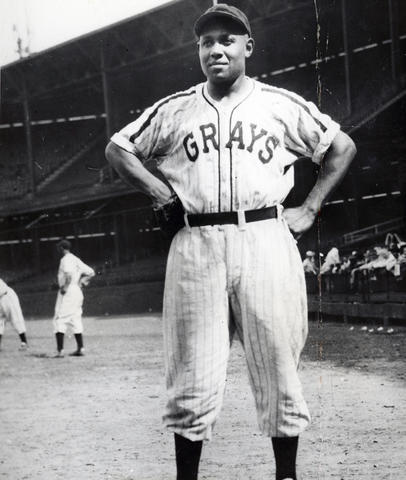
Buck Leonard, First Base: Leonard is the only member of this line up that did not have a major appearance in the MLB. By the time he was offered a contract to play in 1952, he kindly declined due to the reason he claimed he was far too old to play. He would play in the Negro League for the Homestead Grays from 1934 to 1950, being a teammate of Josh Gibson's for several years. Not the best home run hitter, Leonard had a knack for getting on base, with a career OPS of .906 and his career batting average of .320. During his time with the Grays, he won the Negro World Series three times and was selected as an All-Star of the Negro League 13 times. Leonard was recognized to the Baseball Hall of Fame in 1972 and was nominated to the Washington Nationals Ring of Honor in 2010. Leonard's playing style drew the comparisons of Lou Gehrig of the New York Yankees. Leonard's career eventually lasted longer than Gehrig's, had they both been playing at the same level would be more than competitive for the two players. Leonard's career lasted 21 years compared to Gehrig's 16-year career; however, the latter would have lasted longer had he not been diagnosed with the disease that forced him into retirement.
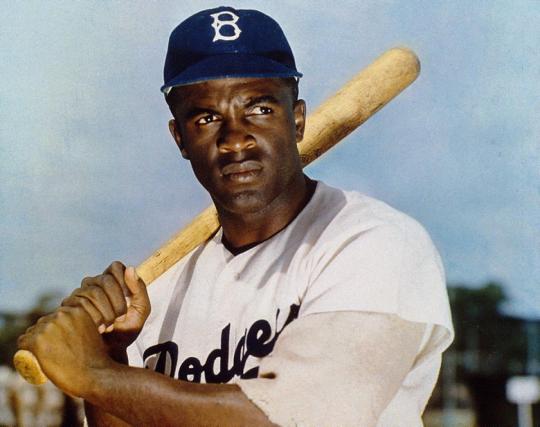
Jackie Robinson, Second Base: It is more than obvious that Robinson will be on this team at the position he dominated the most. As stated above, Robinson was the first player to break the color barrier in the MLB, and he only played one season for the Kansas City Monarchs and Montreal Royals. He made a bigger impact during his ten-year career with the Brooklyn Dodgers. In his rookie season, he led the league in stolen bases in 1947; he would do so again in 1949. In the same year, Robinson would also win the NL MVP. From 1949 to 1954, Robinson would be an All-Star representing the Dodgers for six straight seasons. The pinnacle of all those accolades was capped off with winning his first and only World Series title in 1955. The league already recognizes the greatness that Robinson impacted in the MLB, he would also be inducted into the Hall of Fame by 1962 after being retired for six years.
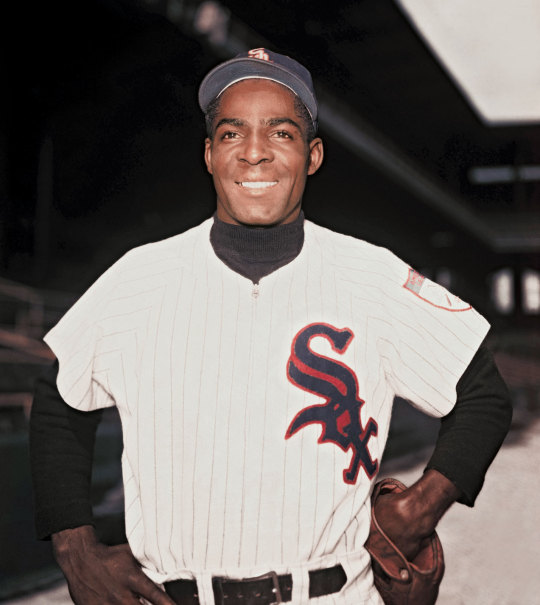
Minnie Miñoso, Third Base: Miñoso was the first Black Cuban in the Major Leagues and the first black player to play for the Chicago White Sox. Miñoso was a Cuban born player that originally played for the New York Cubans from 1947 to 1949 and made his debut for the Cleveland Indians in that final year. Eventually losing his playing position to Larry Doby. Miñoso found his major career success with the White Sox, and played well enough to earn the nickname, "Mr. White Sox". From 1951 to 1953, he led the American League in stolen bases for three straight seasons. Not known for his offense in batting, Miñoso was a superior defender and three-time Gold Glove candidate. His speed and defense also awarded Miñoso with being an All-Star nine times in the entirety of his career. Miñoso has been left out of the Hall of Fame in the United States, but is hailed for his career in the Spanish Leagues in Cuba and Mexico, earning accolades in those country's Hall of Fame.
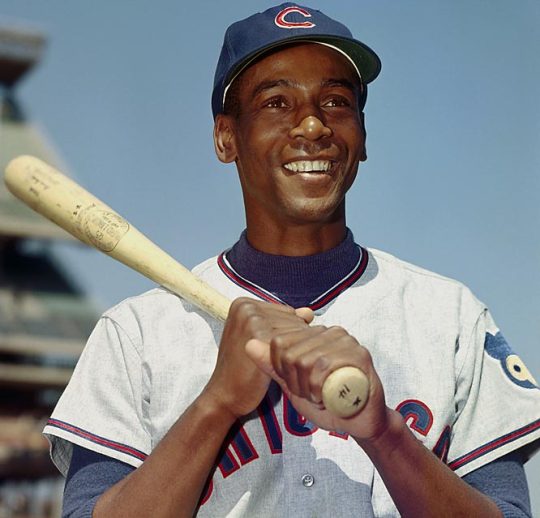
Ernie Banks, Shortstop: Having both major Chicago prolific players from the Negro League gives this centennial team more sentimental value. You cannot have "Mr. White Sox" without "Mr. Cub". Ernie Banks was the first black player on the Chicago Cubs after being a part of the Negro League playing for the Kansas City Monarchs in 1951 and 1953. Banks played his entire 19-year career with the Cubs and was an exceptional All-Star, earning the title for 14 out of those 19 years. Banks won the National League MVP in 1958 and 1959. In his first MVP campaign, he also led majors in home runs with 47, he would earn lead the majors in the category once more in 1960. Banks paved the road of being the all-time home run leader for the Cubs franchise at 512, a record that eventually was broken by Sammy Sosa. Banks was a first-ballot Hall of Famer in 1977 and has his jersey number 14 retired by the Cubs.
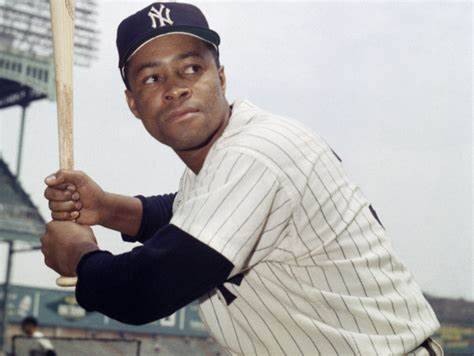
Elston Howard, Left Field: Howard was the first black player to break the color barrier for the New York Yankees. He first started his career with the Kansas City Monarchs in 1948 and played there until 1950, taking a five-year hiatus from playing for the Yankees in 1955. Being a part of the Yankees, he carried the most champion experience in winning, helping the franchise win six of their 27 World Championships; four as a player and two as a coach. Howard also won the American League MVP in 1963, winning a Gold Glove in the same year. In all his years as a player, Howard also was an All-Star 12 times during his career. His career statistics never got him inducted into the Hall of Fame, but he does have his jersey number retired by the Yankees; number 32.
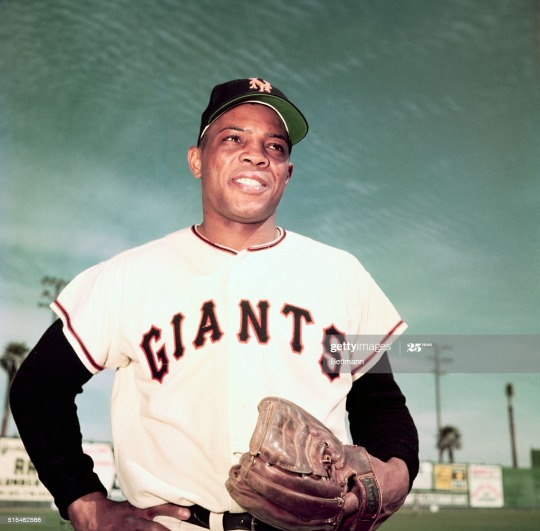
Willie Mays, Center Field: Known as one of the greatest baseball players of all time, Mays is the best player on this centennial team. Before making a move to the majors, Mays spent three seasons with the Birmingham Black Barons in the Negro League before playing for the Giants in New York and San Francisco. In his first year with the team in 1951, Mays won Rookie of the Year and was slightly interrupted in his career being drafted by the Army in 1952. In his return to the Giants in 1954, he followed his first career year with his first National League MVP, a league batting title, and a World Series championship. Following that season, Mays would become the home run leader four times in 1955, 1962, 1964, and 1965; which in turn gave him his second MVP title in that final year. Mays was exceptional in the outfield defensively, earning the Gold Glove award a total of 12 times. Always a popular player, he spent his entire career being an All-Star and was always on the All-Star team. Mays' career statistics are exceptional; hitting a total of 660 home runs, a career batting average at .302, a career OPS at .941, and one of the highest career WAR stats in the game at 156.2. Mays being the best at what he did makes him even larger than baseball, but even more for black athletes everywhere. Even after the centennial Negro League team, Mays is most likely a part of the best starting nine that ever played the game.
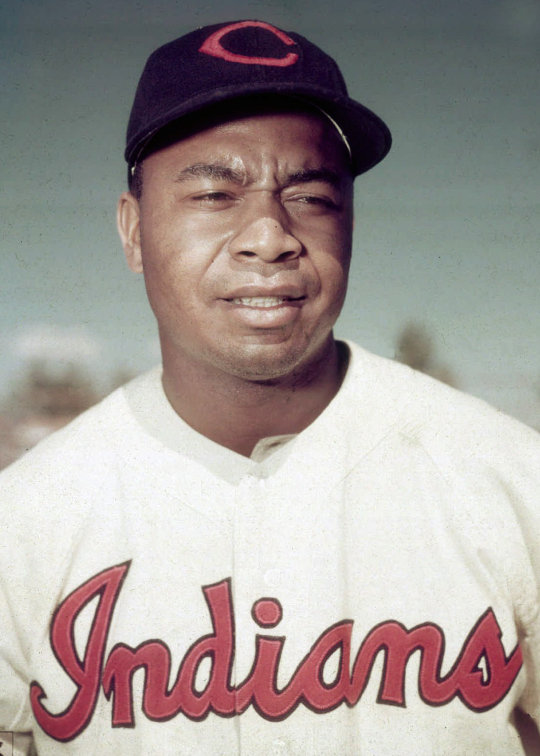
Larry Doby, Right Field: Doby is the second player in baseball history to break the color barrier and the first black player to do so in the American League. Doby gained his recognition in the Negro League playing for the Newark Eagles on two separate stints before being interrupted in-service time during World War II. He first started as the team's third baseman before moving to play in the outfield. Doby would be an exceptional addition to the Indians, winning the World Series for the franchise in his second season with the club. Years following, he would lead the American League in home runs twice in 1952 and 1954; also leading the league in RBIs the latter of the two years. Doby reigned as an All-Star for seven straight seasons from 1949 to 1955. He was inducted into the Hall of Fame by 1998 and had his jersey number 14 retired by the Cleveland Indians. Even though Doby played center field, moving over to right would make sense for the player designated for the position next to him.
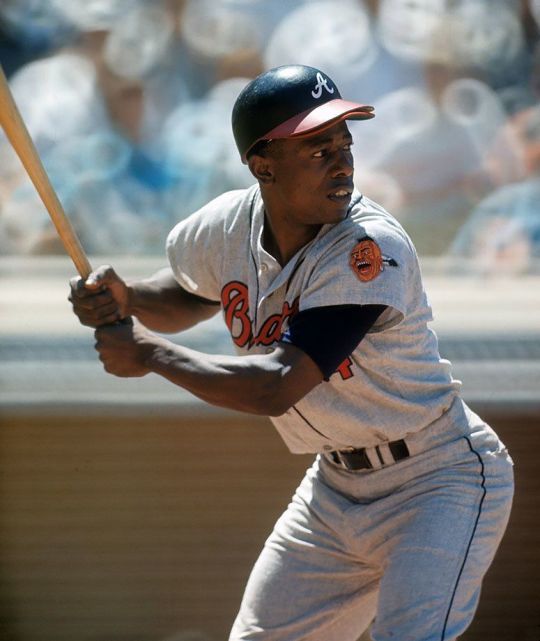
Hank Aaron, Designated Hitter: "Hammerin' Hank" was known as the man that broke Babe Ruth's all-time home run record when playing for the Milwaukee and Atlanta Braves. Plenty of fans forget that Aaron spent one season with the Indianapolis Clowns in 1952 before spending the majority of his career with the Braves. Aaron was a huge deal on the Braves, winning the National League MVP and a World Series championship in 1957. That year, he led the league in home runs (44), RBIs (132), and total bases (369). He would go on to win the home run and RBI titles three more times, also holding the National League batting title two times in his career. Aaron set the record of home runs at 755 when he finished playing in 1976 and was held for 31 years before being broken by Barry Bonds. Aaron was a first-ballot Hall of Famer when he was inducted in 1982 and also had his jersey number retired by the Braves and Brewers. He won three Golden Gloves for his time on the field, but strictly for this centennial team, he would make an exceptional designated hitter.
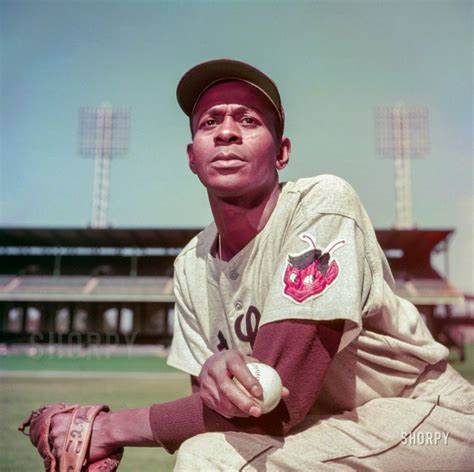
Satchel Paige, Starting Pitcher: Considered to be one of the best pitchers of all time, Paige was in a league of his own. Had he had his chance to play in the Majors at an earlier time frame, the pitching title named after Cy Young would most likely be given to Paige. He spent his first nine years of ball, playing between the Negro League and the Independent Negro League from 1927 to 1936. Before returning to play in 1939, he would play in other independent leagues in Dominican Republic, Mexico, and Puerto Rico. He then joined the Kansas City Monarchs and won his first Negro World Series with the team in 1942. Paige was offered a contract by the Cleveland Indians in 1948 when he was 42-years old, he would then help the team win a World Series alongside teammate Larry Doby; he is the first pitcher to have pitched in both league title games. Paige's pitching style was something out of an urban legend, drawing crowds of many to see him play over his 30-year playing career. His record throughout his entire career was 205-117 with a total of 2,103 strikeouts. Paige was the first black inductee from the Negro League ushered into the Hall of Fame in 1971. Where his career has always been a whirling question of 'what if's,' his legacy lives forever.
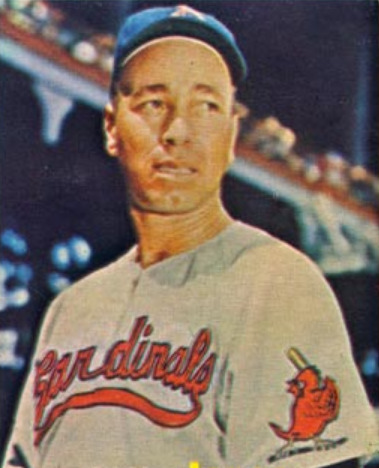
Sam Jones, Starting Pitcher: Jones held his own as one of the best pitchers that transitioned between leagues. Originally scouted by Satchel Paige, he was mentored to be an incredible pitcher during his development in the Negro League. He first played for the Cleveland Buckeyes for two seasons before joining the Indians in 1951. Even though Jones joined the majors from the American League, he saw the majority of his success in the National League. In his first season with the Chicago Cubs, he pitched a no-hitter on May 12, 1955; he wound up winning his first strikeout title in the same season. Jones would win the strikeout title two more times playing for the Cubs and St. Louis Cardinals. In 1959, Jones led the National League in wins and ERA when playing for the San Francisco Giants. Jones had one of the best sweeping curveballs the league ever witnessed, with his standard curveball being as quick as a whip that batters did not see coming. Coming from a long legacy of being hand-picked by Paige, he proves his worthiness being a legit member of this rotation.

Don Newcombe, Starting Pitcher: Justin Verlander is a pitcher to win Rookie of the Year, MVP, and a Cy Young in his remarkable career. He was the first pitcher to do so since Newcombe came into the majors. "Newk" as the nickname he earned in his service time spent two years with the Newark Eagles in the Negro League. He was the third black pitcher to join the league after Paige and Dan Bankhead. Making his debut for the Brooklyn Dodgers in 1949, he won Rookie of the Year with the statistics of 17-8, 149 strikeouts, 5 shutout games, and posting a 3.17 ERA. He would go on and win the World Series with Robinson and Campanella in 1955. Following his championship campaign, he would win the Cy Young and the National League MVP in 1956; he also led the league in wins for a pitcher. Newcombe would have a ten year service time in the majors and even moved his talent to Japan playing for the Chunichi Dragons. In addition to his pitching skills, he also valued as a great hitter, with an average at .271 and a total of 15 home runs.
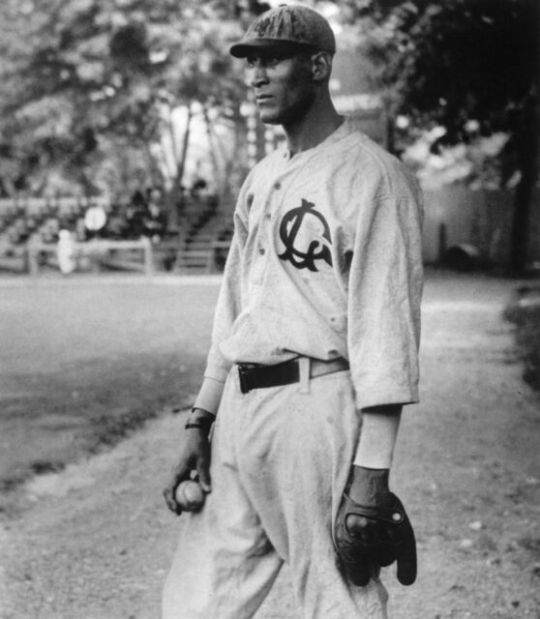
“Smokey” Joe Williams, Starting Pitcher: These next two pitchers are members that never got to see service time on the major league level, but had remarkable years when they played in the Negro League. "Cyclone Joe" was one of the best right-handers during the earlier years of the league; there are some baseball historians that argue that he was better than Paige. Williams served 23 years in the Negro League, posting a career record at 85-55 and an unconfirmed accumulative ERA posted at 2 flat. He pitched a no-hitter when playing for the New York Lincoln Giants on May 4, 1919, in Harlem. Williams posted an incredible career playing for almost a dozen teams during his service time. He was recognized in the Hall of Fame when he was inducted by the Veterans Committee in 1999.

Leon Day, Closer: Day is a certified top-grade reliever that had exceptional statistics in the Negro League. He played for a total of 14 years with 284 strikeouts during his service time. Day was a seven-time All-Star and won the Negro World Series in 1946. Unfortunately, Day is another pitcher that did not see service time in the majors. However, he was recognized in the Hall of Fame in Cooperstown, a dream that always wanted to be fulfilled to be recognized for his talents. It is only fitting to have him as the closer of this centennial team.
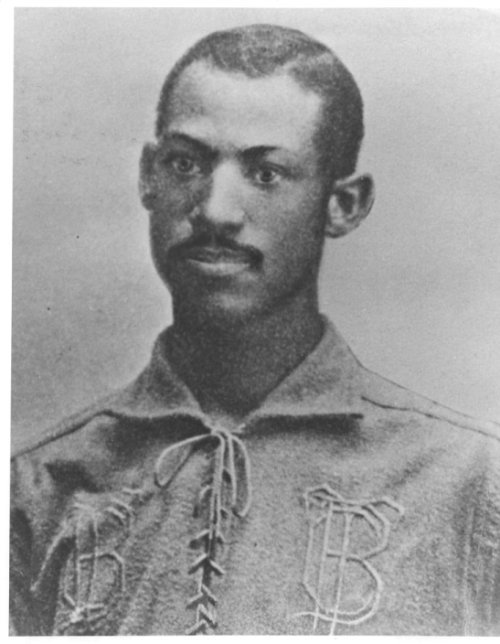
This would be an exceptional team to play in an exhibition match against any legendary team that won a World Series in the majors. It would only be fitting for this team to be managed by Moses Fleetwood Walker, a true talent and a student of the game. Walker is recognized as the first black player to play in majors, many decades before Jackie Robinson. Only Walker faced criticism being the only black baseball player in the league, and only had one year of service time playing for the Toledo Blue Stockings in 1884. It would make this historical team even more remarkable if Walker managed this team of fine baseball players. With the celebration of the Negro League being recognized in Cooperstown, who knows what major accomplishments baseball will take on growing the game in the decades to come. Hopefully, the next step is for baseball to blossom as an international game with the help of the MLB, the WBC, and other major leagues around the globe.
#journal#jackie robinson#jackie robinson day#mlb#negro league baseball#baseball#centennial#history#black history#blm#Fantasy Baseball#Custom Baseball teams
3 notes
·
View notes
Text
So I should really be working on my thesis right now, but I just wanted to pop in here to say that I’m reading this paper called “Far Beyond the Stars: The Framing of Blackness in Star Trek: Deep Space Nine” by Lisa Doris Alexander and oh my gosh feelings. So basically the hat Sisko is wearing when he explains how linear time works through baseball in “Emissary” is a Homestead Grays cap, which was a Black baseball team from around 1912-1950s, which is important because it’s not a super well-known team in the 1990s, but it immediately connects Sisko to African American history and culture, which is not something that usually happens with Star Trek’s Black charcters. So this baseball cap is just one piece of how DS9 was sort of revolutionary in the portrayal of Blackness in Star Trek, but also Blackness on television in general. But! But!!!! This hat appears a second time!! In “Starship Down”!!!! Because it’s the hat Sisko tosses to Kira!!!!! And y’all KNOW I have a lot of feelings about their relationship and the intersection of Sisko’s Blackness with his role as the Emissary, and I just have soooooo many feeeeeelingssssss
43 notes
·
View notes
Photo


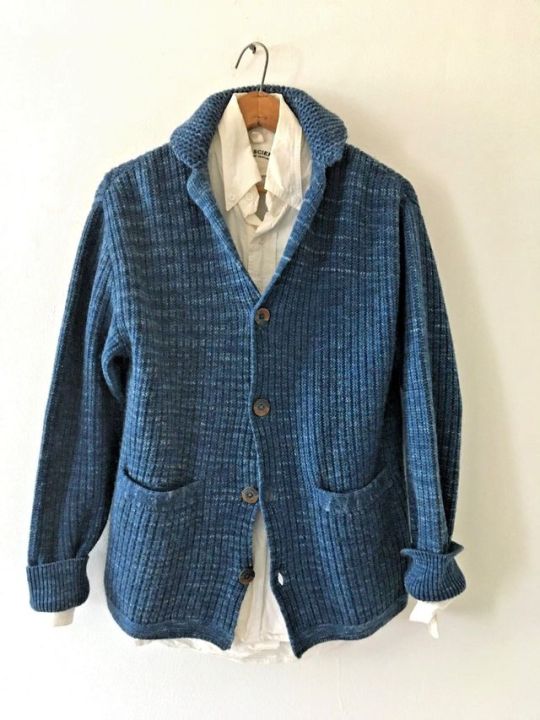
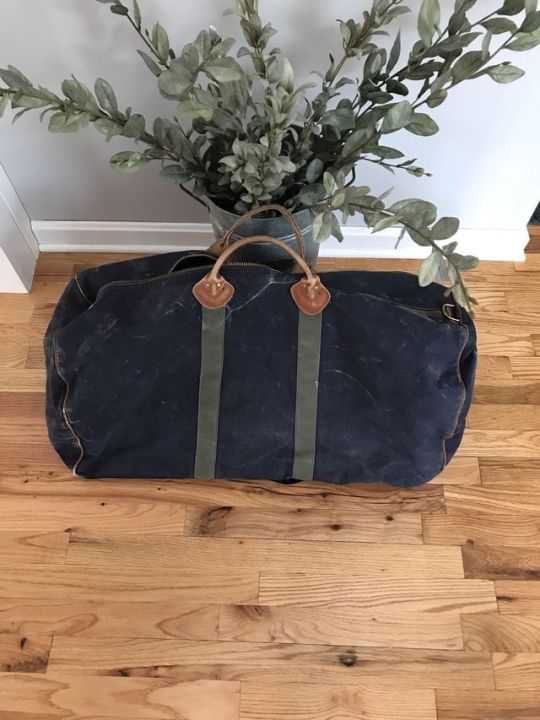

eBay Roundup
We spend hours trawling for the best of menswear on eBay so that you don’t have to. To get a third eBay roundup each week, along with a list of the best sales, subscribe to our exclusive Inside Track newsletter. It only costs $5 a month. The savings you’d earn from just one eBay purchase a year will offset the subscription.
A good mix of a lot of things today -- everything from soft, unstructured Christian Kimber loafers to work boots from White’s. I also like the olive linen Kiton sport coat and 45rpm knitted jacket you see above, as well as the vintage LL Bean carryalls.
If you’d like to dig up more menswear gems, try using our customized eBay search links. We’ve made them so you can quickly hone-in on high-end suits, good suits, high-quality shirts and fine footwear.
Suits, sport coats, and blazers
Blue plaid Belvest sport coat, 40
Brown checked Brooks Brothers sport coat, 42
Tan herringbone Cucinelli sport coat, 42
Navy Caruso sport coat, 44
Green linen Kiton sport coat, 45 (pictured above)
Sweaters and knits
45rpm indigo knitted jacket, XS (pictured above)
Navy Kapital Surf hoodie, S
Gray cashmere Avon Celli sweater, 40
Margaret Howell blue linen sweater, M (fits like XS?)
Navy Universal Works shawl collar cardigan, M
Gray Inverallan Shetland sweater, 42
Brown alpaca and silk Inis Meain zip-up sweater, L
Cream Inverallan cabled shawl collar cardigan, L
Shirts and pants
LVC denim snap button Western shirt, XS
Funky patterned Norse Projects shirt, XXL
Olive Engineered Garments shorts, 32
LVC 1976 501 raw denim jeans, 33
Burnt ochre Album chinos, 34
Outerwear
Navy Kapital chore coat, XS
Yellow Engineered Garments anorak, S
Navy Norse Projects parka, S
Gustin gray wool CPO jacket, M
Navy Buzz Rickson deck jacket, 40
Knitted Engineered Garments Bedford jacket, M
Blue satin Ebbets Field Flannels baseball jacket, M
Denim Rocky Mountain Featherbed down vest, 40
Olive shearling Eidos coat, 40
Gray flannel quilted Mackintosh jacket, L
Brown herringbone Ralph Lauren topcoat, 42
Beige textured Eidos sweater, L
Olive Engineered Garments Andover jacket, L
Black nylon Wings + Horns bomber jacket, XL
Navy JS Homestead work coat, XL
Shoes
Vass semi brogues, 7
Alden suede cap toe bluchers, 7
Ralph Lauren Chelsea boots, 8
Ralph Lauren suede chukkas, 8.5
Viberg suede service boots, 10
White’s work boots, 10 (pictured above)
RRL black longwings, 10.5
Christian Kimber grey suede loafers, 11 (same as model above, but in gray suede)
Ralph Lauren shell cordovan chukkas, 11/11.5
Ties
Black ancient madder Ralph Lauren tie
Salmon colored Shibumi zig-zag knit tie
Gray wool plaid Pierrepont Hicks tie
Brown striped Isaia tie
Green striped Kiton tie
Black Drake's grenadine
Bags, briefcases, and wallets
Vintage LL Bean canvas holdall (blue, brown) (pictured above)
Misc.
Berg & Berg dress belts, 33 (black, brown)
Navy straw Borsalino hat, 61
TSTPR Charlie Brown ball cap
Crazy Ralph Lauren robe, L
If you want access to an extra roundup every week, exclusive to members, join Put This On's Inside Track for just five bucks a month.
4 notes
·
View notes
Photo
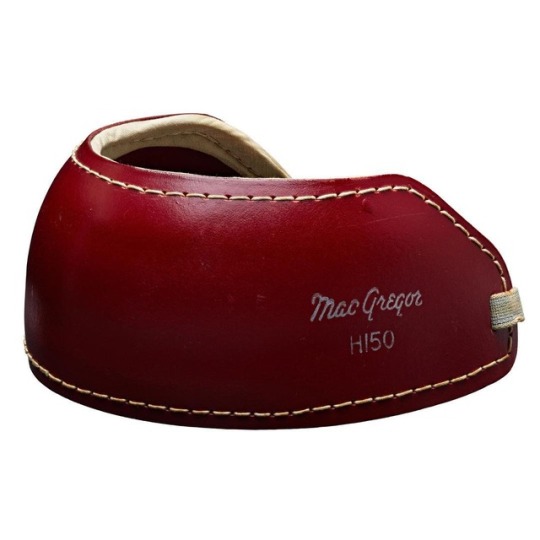
In the early 1900s, leather liners like this were worn by baseball players underneath their caps, giving them a small amount of protection in an era before full helmets were common. This red leather liner was worn by Walter "Buck" Leonard—first baseman, heavy hitter, and one of the most famous players in the Negro Leagues. Swipe to see a photo of Buck Leonard in action. 📸 Born in 1907, Walter "Buck" Leonard spent nearly all of his professional baseball career playing for the Homestead Grays, a Negro Leagues team based in Pittsburgh, Pennsylvania. Famous for both his prowess at bat as well as his quiet demeanor, Leonard helped lead the Grays to win nine consecutive Negro National League championships. ⚾️ Despite his successes on the field, Leonard was unable to secure a place in the major leagues due to racial segregation. By the time professional baseball's "color line" was broken in the the 1940s, Leonard felt he was too old to be an effective player. Decades later, in 1972, Leonard's contributions to the sport were recognized when he was inducted into the Baseball Hall of Fame. #BlackHistoryMonth #AmericanHistory #SportsHistory #BaseballHistory #PennsylvaniaHistory #PittsburghHistory #SportsTechnology #Innovation #ManyVoices #NationWeBuildTogether https://ift.tt/2GUAzwY
0 notes
Photo
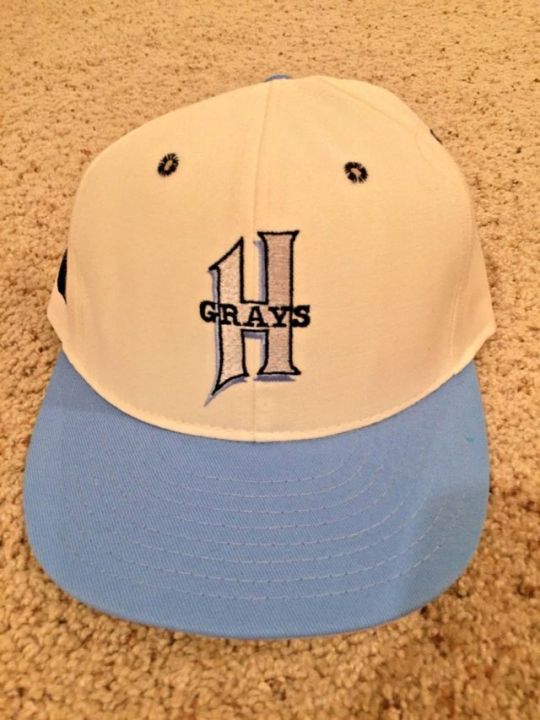
Homestead Grays - NEGRO LEAGUE BASEBALL SNAPBACK CAP- ADJUSTABLE SIZE - NEW
BUY IT NOW – Homestead Grays - NEGRO LEAGUE BASEBALL SNAPBACK CAP- ADJUSTABLE SIZE - NEW
0 notes
Text
Division Game
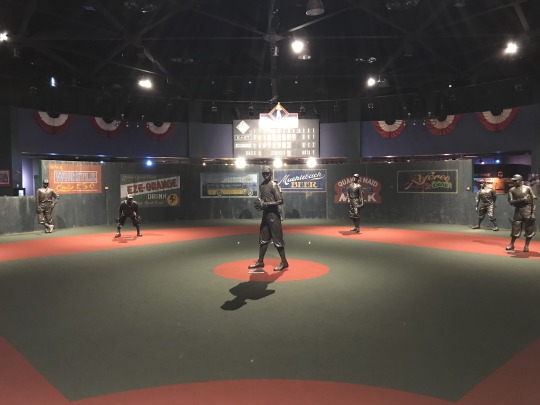
Let’s start with what the Negro Leagues Baseball Museum in Kansas City, Mo., isn’t.
It’s not a hall of fame for Negro Leagues players and executives. There are currently 35 former Negro League players and executives enshrined in the National Baseball Hall of Fame in Cooperstown, N.Y., immortalized (as they should be) alongside Babe Ruth, Ted Williams, Joe DiMaggio, and the other major-league greats.
On this point, the NLBM makes its position abundantly clear: “Often the museum is referred to as the ‘Negro Leagues Hall of Fame’ or ‘Black Baseball Hall of Fame’ and various names. It is important to the museum that we not be referred to as such. The NLBM was conceived as a museum to tell the complete story of Negro Leagues Baseball, from the average players to the superstars.
“We feel VERY strongly that the National Baseball Hall of Fame, in Cooperstown, NY, is the proper place for recognition [of] baseball’s greatest players. The Negro Leagues existed in the face of segregation. Baseball’s shrines should not be segregated today. Therefore, the NLBM does not hold any special induction ceremonies for honorees. As space allows, we include information on every player, executive, and important figure. However, we do give special recognition in our exhibit to those Negro Leaguers who have been honored in Cooperstown.”
As compared to Cooperstown, though, the NLBM is the place where the story of the Negro Leagues is most completely told. The museum, which was founded in 1990 and moved into its current space in the 18th and Vine district of Kansas City (a historic center of African-American culture) seven years later, features a chronological history of African-American baseball from the 1860s until the death of the Negro Leagues in the 1960 following integration in MLB.
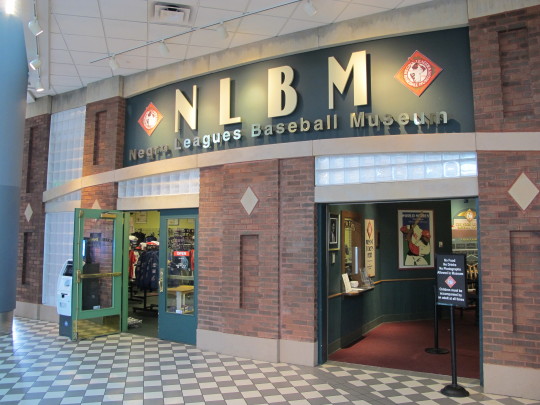
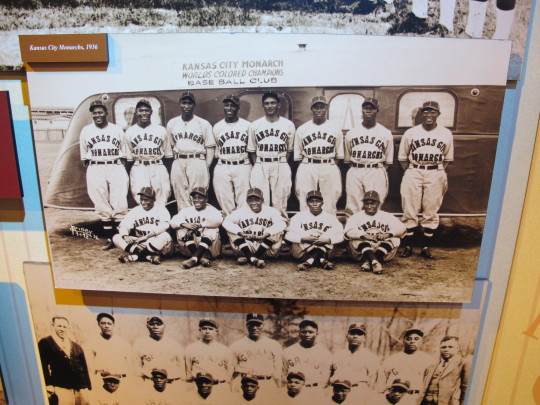
I visited the museum on this year’s baseball trip and came away with a far greater appreciation for Negro League history. The Negro Leagues were pioneering in many respects: For one thing, I didn’t know that night baseball was first played by the Kansas City Monarchs in the Negro Leagues in 1930, five years before the first major-league game under the lights.

I also was not aware of the organizational struggles of Negro League teams. The NLBM proudly displays the articles of incorporation of the first Negro National League in 1920. But the league, which was founded at a Kansas City YMCA, existed only until 1931, far before what the museum describes as the Negro Leagues’ heyday in the 1940s.
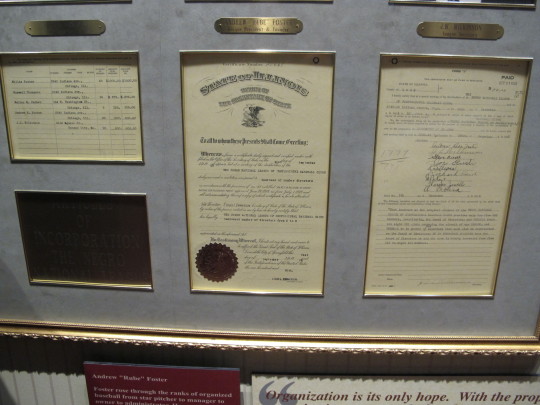
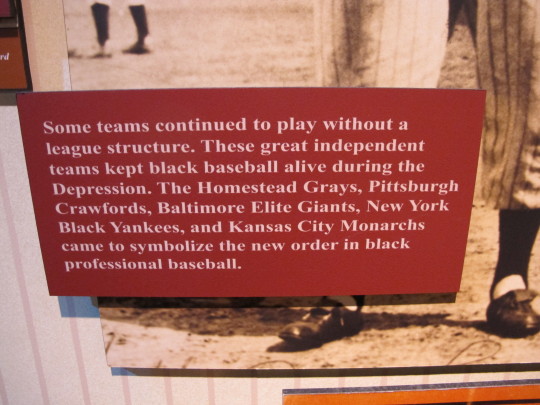
As well known as several Negro League teams are today—the Monarchs, Homestead Grays, Pittsburgh Crawfords (with Hall of Famers Josh Gibson, Judy Johnson, and Cool Papa Bell), and Newark Eagles—the teams struggled mightily as businesses. According to the NLBM, the Grays were the only profitable team in the 1920s.
There were numerous interesting facts among the NLBM exhibits. Satchel Paige was the biggest star and highest-paid Negro Leaguer, barnstormed across the country, and would not hesitate to change teams for a bigger payday. The annual East-West All-Star Game drew crowds of 50,000-plus at Comiskey Park in the early 1940s. Monte Irvin, Larry Doby, Willie Mays, and Paige all played in both the World Series and Negro League World Series. Paige was the oldest rookie in MLB history and was an All-Star at age 45 and 46.

My only criticism of the NLBM would be that it perhaps focuses too much on the Negro League owners and organizers, though Gus Greenlee, Rube Foster, and Effa Manley were fascinating individuals. To me, the players should always be the story, and I wanted to learn more about not just Paige and Gibson and Jackie Robinson, but Buck Leonard, Oscar Charleston, and others.
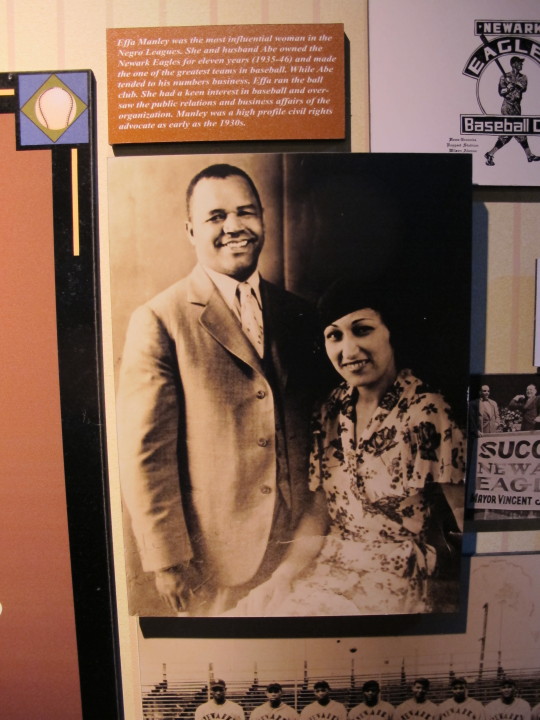

One white player who is prominently featured is Cap Anson, the 19th century great who staunchly opposed African-American players in professional baseball, leading to the so-called “gentleman’s agreement” among teams that kept blacks out of the majors. Kennesaw Mountain Landis is also criticized for failing to integrate baseball during his tenure as MLB commissioner, which ended with his death in 1944.


The NLBM takes about 90 minutes to tour (I was happy to see visitors of all races). The museum shares its building with the American Jazz Museum, and MLB’s Urban Youth Academy baseball/softball complex is part of the same block. The museum features great exhibits on African-American clown teams, which carried on into the 1950s, and on the sports writers and African-American newspapers that crusaded for integration in baseball.
As far as memorabilia, the NLBM included signed Robinson and Paige baseballs, as well as my favorite piece—a bat used and signed by Hall of Famer Turkey Stearnes (nicknamed either because of the way he ran or because he had a pot-belly as a child). Stearnes played for the Detroit Stars, Kansas City Monarchs, and a host of other teams.
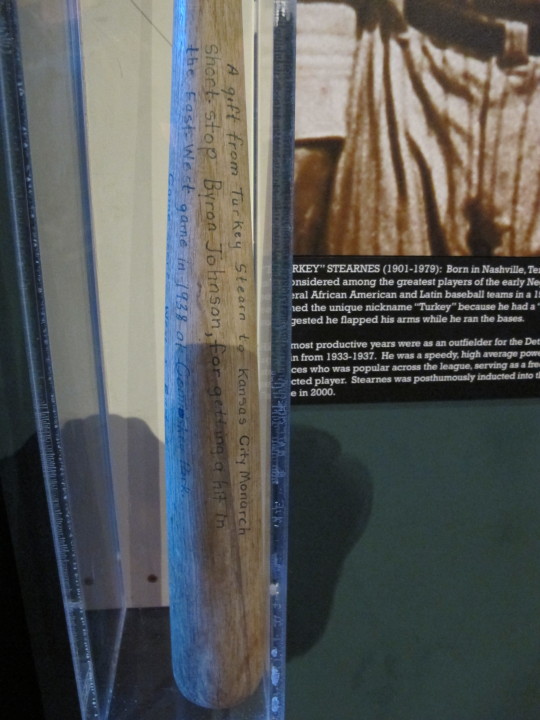

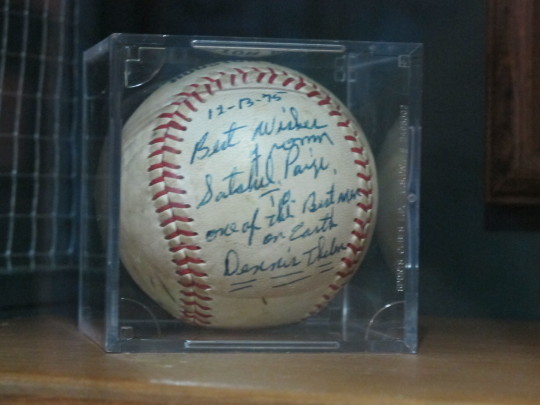
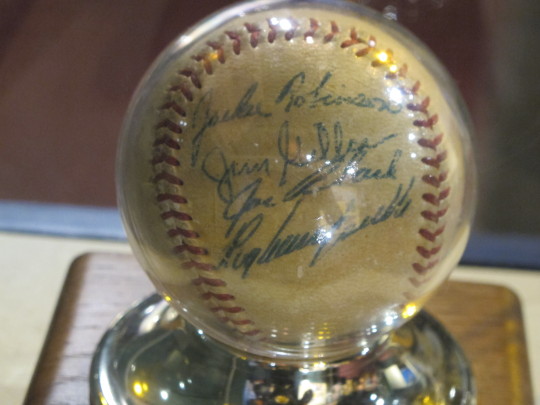
The museum also includes what it describes as lifestyle exhibits that highlight black businesses from the era, including a hotel room and a barbershop, though the exhibit emphasizes that most Negro League teams stayed in hotels far worse than the one depicted in the exhibit.
After Robinson and Larry Doby broke the color barrier in 1947, it still took 12 years before every major league team featured a black player. Although in decline after losing their star players to the majors, the Negro Leagues continued until 1960. The museum chronicles the demise of the Negro Leagues and the accomplishments of former Negro Leaguers in the majors (including Hank Aaron, Ernie Banks, Mays, and others).
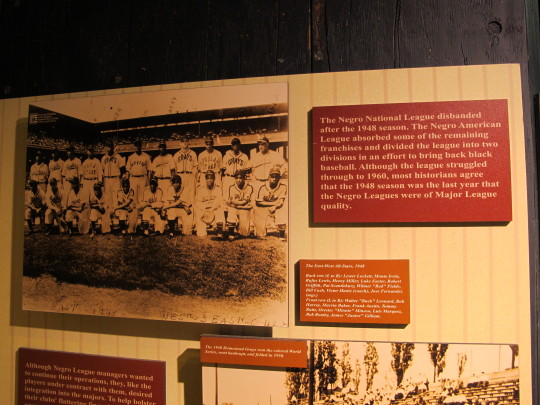
The self-guided tour through the NLBM leads to a series of lockers featuring replica jerseys and the Cooperstown plaques of the Negro Leaguers who have been inducted in the National Baseball Hall of Fame. There’s a set of pearls in Manley’s locker as well, fitting for the first woman inducted in the Hall.
The tour concludes at the “Field of Legends,” which features a replica diamond with 10 bronze sculptures of Negro League greats in the midst of a game. Paige is on the mound, Gibson is behind the plate, and Martin Dihigo is at the plate. Leonard, Johnson, Bell, Charleston, Pop Lloyd, Ray Dandridge, and Leon Day are also on the field; Foster and Buck O’Neil have sculptures elsewhere in the NLBM.

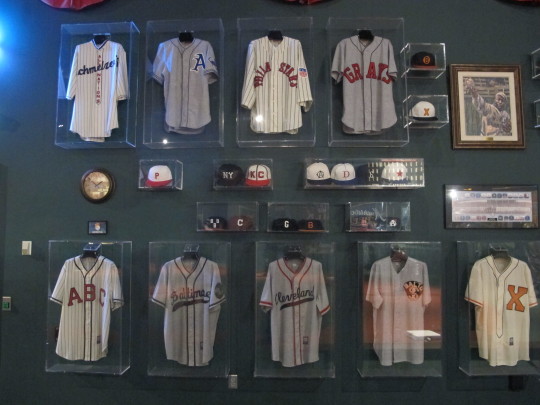

My biggest thought in leaving the NLBM was gratitude that the museum exists. Our connection to the Negro Leagues fades by the day—O’Neil died in 2006, Aaron is 84 years old, Robinson broke the color barrier 71 years ago—but the history of the Negro Leagues is well chronicled in Kansas City.
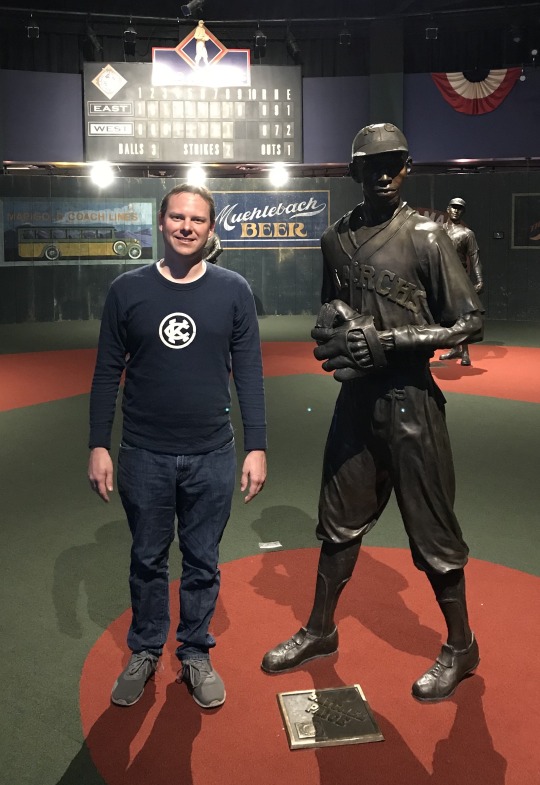
0 notes